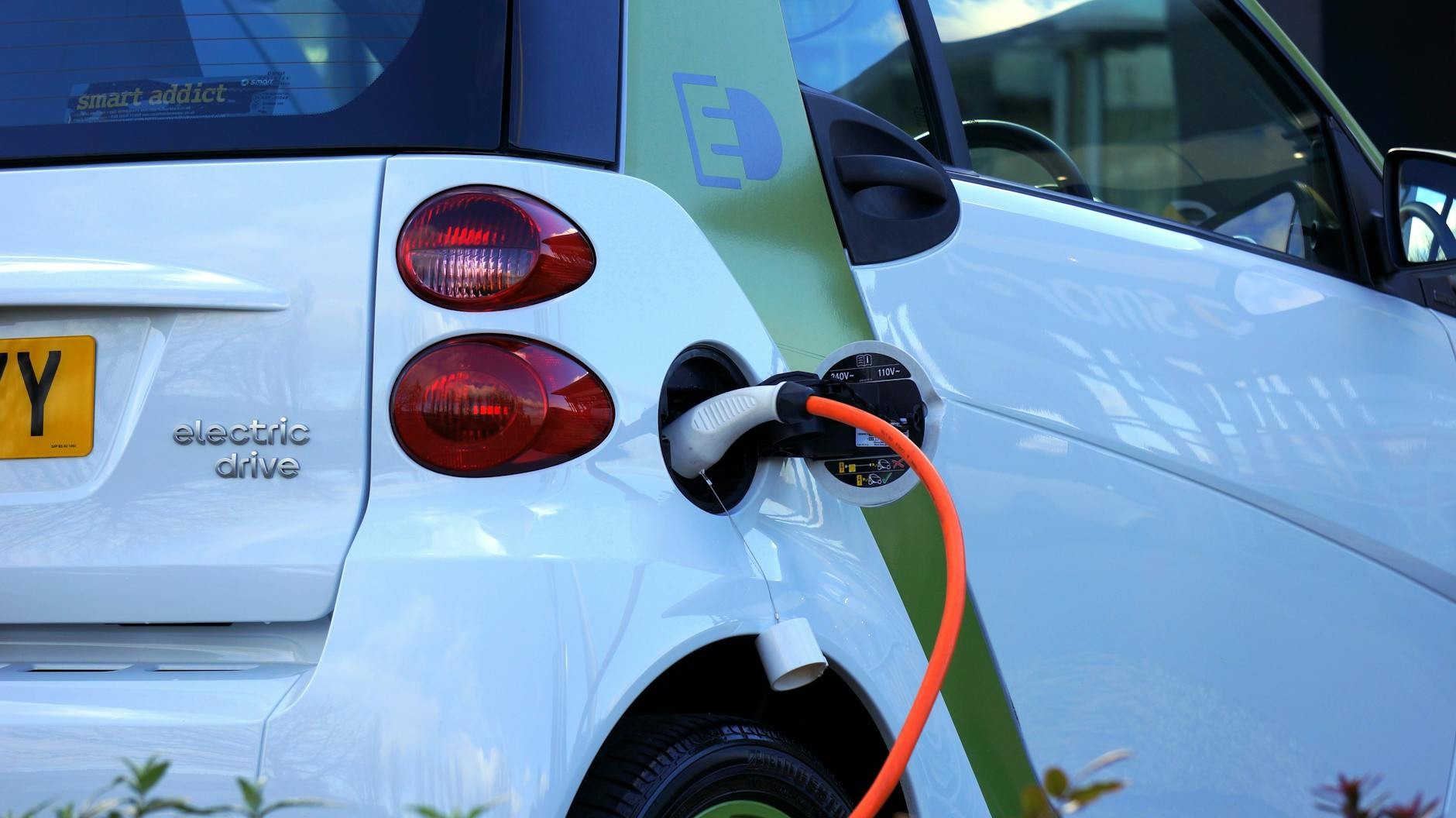Shopping for a new car can be exciting, but it quickly turns complex when you start comparing options. Recently, after spending countless hours researching and test driving vehicles, the question of hybrid cars versus traditional gasoline cars became central to my decision. Hybrids often come with a higher price tag upfront, but the promise of fuel efficiency and lower running costs is alluring. This naturally leads to the crucial question: Is A Hybrid Car Worth It in the long run?
 white and orange gasoline nozzle
white and orange gasoline nozzle
To answer this, we need to delve into the real costs of car ownership. As explored in our comprehensive guide on the total cost of car ownership, owning a vehicle involves more than just the initial purchase price. The primary expenses can be categorized into:
- Purchase Price and Depreciation: The initial cost and how quickly the car loses value.
- Financing: Loan interest if applicable.
- Maintenance and Repair: Regular upkeep and unexpected fixes.
- Fuel: Gas or electricity costs.
- Registration and Inspection: Government fees.
- Insurance: Coverage premiums.
While financing, registration, and inspection costs are generally consistent across both gasoline and hybrid cars, the real differences lie in purchase price, depreciation, fuel, maintenance, and potentially insurance. So, let’s break down these factors to determine if the hybrid premium is a worthwhile investment.
The Time Value of Money and Hybrid Car Investments
To properly assess the value proposition of a hybrid car, we need to consider a fundamental financial principle: the time value of money. Simply put, money today is worth more than the same amount of money in the future. This concept, often described by the saying “a bird in the hand is worth two in the bush,” is crucial when evaluating long-term investments like hybrid vehicles.
 person holding brown chick during daytime
person holding brown chick during daytime
When you opt for a hybrid, you typically pay more upfront. The expectation is that you’ll recoup this extra expense through savings over time, primarily through reduced fuel costs. However, those future savings are less valuable than the extra money you spend today. We need to discount those future savings back to their present value to make a fair comparison.
This involves using a discount rate, which reflects the opportunity cost of your money. A suitable discount rate helps us understand if the long-term savings from a hybrid are substantial enough to justify the higher initial investment, considering that money could be used for other investments or simply saved today.
To determine if a hybrid car is truly “worth it,” we must:
- Quantify the Cost Differences: Pinpoint the specific cost variations between gasoline and hybrid cars across sticker price, depreciation, fuel consumption, insurance premiums, and maintenance expenses.
- Apply an Appropriate Discount Rate: Choose a realistic discount rate to account for the time value of money and evaluate the present value of future savings.
By performing this analysis, we can move beyond just comparing sticker prices and gain a clearer picture of the long-term financial implications of choosing a hybrid car.
Selecting a Discount Rate and Timeframe for Hybrid Car Analysis
For a realistic long-term analysis of hybrid car value, we need to consider both the typical car ownership period and a relevant discount rate. The average lifespan of cars on the road is quite lengthy, but most individuals don’t keep their vehicles for that entire duration. Considering that the average car age in the US is around 12 years, and the average ownership period is about 8 years, a 10-year timeframe offers a balanced perspective for our analysis.
Now, regarding the discount rate, a common and conservative approach is to use the U.S. Treasury bond rate. This rate, often considered the “risk-free rate,” represents the return you could expect from a very safe investment. As of early 2024, the 10-year Treasury rate hovers around 4-5%. For our example, we’ll use a 4.3% discount rate.
This discount rate allows us to calculate the present value of future savings. For instance, savings realized several years down the line are worth less today. Using a 4.3% discount rate, we can determine the equivalent present-day value of future fuel savings or maintenance cost reductions. This approach helps us compare the upfront cost premium of a hybrid with the real value of its long-term financial benefits.
The table below illustrates how a 4.3% discount rate affects the present value of future savings:
| Year | Future Value | Present Value (at 4.3%) |
|---|---|---|
| 1 | $100 | $95.88 |
| 5 | $100 | $81.35 |
| 10 | $100 | $64.76 |
This table demonstrates that $100 saved in 10 years is equivalent to roughly $64.76 today, when using a 4.3% discount rate. This principle is vital for accurately assessing the financial attractiveness of hybrid cars.
Quantifying Hybrid Car Savings: A Practical Example
To put this analysis into practice, let’s compare two popular models: the Kia Sorento gasoline version and the Kia Sorento Hybrid. These models are readily available and represent a common vehicle type for families, making the comparison highly relevant for many car buyers.
For this comparison, we’ll consider key factors like sticker price, depreciation, fuel expenses, insurance costs, and maintenance. All data and calculations are based on publicly available information and average figures for a comprehensive and realistic assessment.
Initial Price and Depreciation
The starting Manufacturer’s Suggested Retail Price (MSRP) for the gasoline Kia Sorento is approximately $31,990, while the hybrid version starts at $36,990. This represents an initial price difference of $5,000.
Regarding depreciation, data from iSeeCars suggests that both the gasoline and hybrid Kia Sorento models depreciate at a similar rate, around 53% in the first five years. This means the higher initial cost of the hybrid also translates to a larger dollar amount lost to depreciation over time.
Fuel Efficiency and Gas Expenses
Fuel costs are a significant factor where hybrids typically shine. Let’s assume an average annual driving distance of 14,000 miles. The all-wheel-drive Kia Sorento Hybrid achieves around 35 miles per gallon (MPG), while the gasoline-only Sorento gets about 24 MPG. Using a current average US gas price of $3.27 per gallon, we can calculate annual fuel expenses:
 car refill transportation gas
car refill transportation gas
- Hybrid Sorento Annual Gas Cost: (14,000 miles / 35 MPG) * $3.27/gallon = $1,308
- Gasoline Sorento Annual Gas Cost: (14,000 miles / 24 MPG) * $3.27/gallon = $1,907
This results in an annual fuel saving of approximately $599 for the hybrid model. Over 10 years, this seems like a substantial saving, but we need to consider the time value of money to accurately assess its present worth.
Insurance Premiums
Insurance costs can vary based on numerous factors, including the vehicle type. On average, hybrid cars tend to have slightly higher insurance premiums than their gasoline counterparts. Let’s assume an average annual full coverage insurance cost of $2,000 for the gasoline Sorento. Hybrid insurance costs are often estimated to be around 7% higher, resulting in an annual premium of $2,140 for the hybrid Sorento. This adds an extra $140 per year in insurance expenses for the hybrid.
Maintenance and Repair Costs
Maintenance is another area where hybrids are often touted as having an advantage. Hybrid systems incorporate regenerative braking, which reduces wear on brake pads. They also typically lack components like alternators and starters, potentially leading to fewer repairs. However, robust data quantifying these maintenance cost differences is challenging to find.
 woman holding gray steel wrench
woman holding gray steel wrench
For this analysis, we’ll conservatively assume average annual maintenance and repair costs of $600 for both models, acknowledging that potential hybrid-related battery replacements could offset savings in other areas. More data is needed for a definitive conclusion on maintenance cost differences.
Total Cost of Ownership: Hybrid vs. Gasoline Over 10 Years
Combining all these factors over a 10-year ownership period, and applying our 4.3% discount rate to future savings and costs, we arrive at a present value total cost of ownership:
- Kia Sorento Hybrid (10-year Present Value): Approximately $55,662
- Kia Sorento Gasoline (10-year Present Value): Approximately $56,491
In this specific scenario, the hybrid model appears slightly cheaper over 10 years, with a marginal saving of around $829 in present value terms. Breaking down the cost categories:
- Depreciation: Hybrid costs approximately $3,000 more due to higher initial price.
- Gasoline: Hybrid saves approximately $4,997 in fuel expenses over 10 years (present value).
- Insurance: Hybrid costs approximately $1,167 more in premiums over 10 years (present value).
It’s important to note that this is a specific example using average figures and assumptions. The financial “worth” of a hybrid car is highly sensitive to individual circumstances and driving habits. Furthermore, this analysis focuses solely on the financial aspect and doesn’t explicitly quantify environmental benefits, which may be a significant factor for some buyers.
 red leaf trees near the road
red leaf trees near the road
To accurately determine if a hybrid is worth it for you, consider these key questions tailored to your situation:
- Specific Car Model: Are you comparing a Kia Sorento or different models? The price difference and fuel efficiency gains vary significantly between models.
- MPG Ratings: What are the exact MPG figures for the gasoline and hybrid versions you are considering? Real-world MPG can differ from EPA estimates.
- Insurance Quotes: Get personalized insurance quotes for both the gasoline and hybrid models you’re interested in.
- Maintenance Costs: Research typical maintenance costs for your specific car models. Online forums and owner reviews can provide insights.
- Depreciation: Investigate the predicted depreciation rates for the specific models you are considering.
- Discount Rate: Is a 4.3% discount rate appropriate for your financial situation? You might adjust this based on your investment opportunities and risk tolerance.
Final Verdict: Are Hybrid Cars a Worthwhile Investment?
Our analysis suggests that, under certain conditions, a hybrid car can be financially justifiable over a 10-year ownership period. In the Kia Sorento example, the hybrid edges out the gasoline model in terms of total cost of ownership, albeit by a small margin.
However, this conclusion is not universal. The “worth” of a hybrid car is highly dependent on several variables, most notably:
- Fuel Prices: Higher gas prices significantly enhance the savings from a hybrid’s superior fuel economy.
- Driving Habits: Individuals who drive more miles annually will realize greater fuel savings. City driving, which often involves stop-and-go traffic, maximizes hybrid efficiency gains.
- Initial Price Premium: The price difference between a hybrid and its gasoline counterpart directly impacts the payback period. Smaller price premiums make hybrids more attractive financially.
- Personal Discount Rate: Your individual financial circumstances and investment opportunities influence the appropriate discount rate and thus the present value of future savings.
Ultimately, determining if a hybrid car is “worth it” requires a personalized analysis. Use the framework and factors discussed here to evaluate your specific situation. By carefully considering your driving needs, financial situation, and the long-term costs, you can make an informed decision about whether a hybrid car is the right choice for you. While the financial benefits might be marginal in some cases, the potential environmental advantages and technological advancements of hybrid vehicles may also contribute to their overall value for many car buyers.